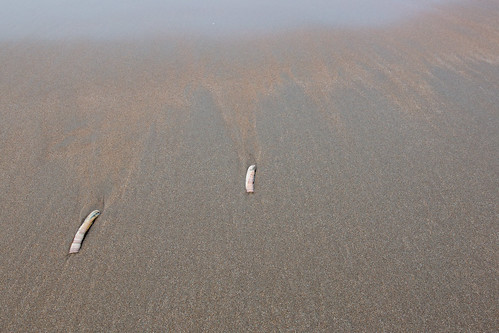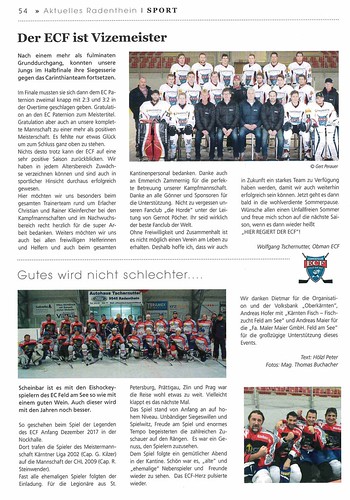Folds, flattened or scalloping of Kerckring folds (Fig. ).Journal of Medicine and Life VolIssue , OctoberDecemberFig. WLE, Fissures (grooves) developing a crackedmud appearance within the duodenal bulbFig. WLE, Atrophy with visible vessel pattern inside the duodenal bulbFig. WLE, Scalloping on the Kerckring folds inside the descending duodenumFig. NBI, Proeminent submucosal vessels, and mucosal fissuresThese markers are usually described in the descending duodenum, with much less focus generally getting paid to alterations inside the duodenal bulb . A number of these markers may also be connected with other causes (nonceliac) of villous atrophy (VA) for example infectious (Giardiasis, modest intestinal bacterial overgrowth, HIV enteropathy), druginduced (olmesartan, mycophenolate mofetil, methotrexate), autoimmune (autoimmune enteropathy, Crohn’s illness) and others (tropical sprue, collagenous sprue, typical variable immunodeficiency, unclassified sprue) . In the existing study, we aimed to evaluate the diagnostic accuracy of these markers for CD in PubMed ID:https://www.ncbi.nlm.nih.gov/pubmed/17916413 an adult population undergoing upper gastrointestinal endoscopy, with no prior CD serologic workup.Materials and MethodsFig. WLE, Atrophy with reduction of duodenal foldsWe retrospectively evaluated individuals who underwent upper GI endoscopy and presented a single orJournal of Medicine and Life VolIssue , OctoberDecembermore on the following endoscopic functions (atrophy, fissures, mosaic, or nodular pattern inside the bulb second duodenum, scalloped folds, reduced or absent folds in the second duodenum) or have been suspected for celiac disease, irrespective in the presence or absence of those markers. Over a period of years, among June and , sufferers altogether met the criteria, but had been excluded from analysis due to the fact duodenal biopsy or CD serology was either not done or not available. Regardless of the truth that duodenal erosions have been described in CD , individuals with such alterations at endoscopy had been excluded simply because they are a lot more regularly a consequence of peptic or NSAID injury. Endoscopies had been performed by utilizing high definition endoscopes (Pentax, Tokyo, Japan; and Olympus, Tokyo, Japan) by seasoned examiners who cautiously inspected the duodenum as a part of the routine examination. All individuals had biopsies sampled in the  duodenum and have been serologically checked for LGH447 dihydrochloride web IgAtTG antibodies, serum IgA and EMA. CD diagnosis was created according to present readily available suggestions ,. Information analysis such as sensitivity (Sn), specificity (Sp), good predictive worth (PPV) and adverse predictive worth (NPV) was carried out by utilizing SPSS Statistics v. (SPSS Inc Chicago, IL) and Epi Info (CDC, Atlanta, Georgia, USA). Outcomes were expressed as imply normal deviation (SD) for continuous variables and proportion for categorical variables. Statistical significance was set at of CD. The presence of any endoscopic marker at endoscopy yielded a Sn of , having a modest PPV of . but quite higher NPV which meant that the absence of endoscopic stigmata produced a diagnosis of CD really unlikely. Bulb atrophy and reduction or MGCD265 hydrochloride web flattening of Kerckring folds had been by far the
duodenum and have been serologically checked for LGH447 dihydrochloride web IgAtTG antibodies, serum IgA and EMA. CD diagnosis was created according to present readily available suggestions ,. Information analysis such as sensitivity (Sn), specificity (Sp), good predictive worth (PPV) and adverse predictive worth (NPV) was carried out by utilizing SPSS Statistics v. (SPSS Inc Chicago, IL) and Epi Info (CDC, Atlanta, Georgia, USA). Outcomes were expressed as imply normal deviation (SD) for continuous variables and proportion for categorical variables. Statistical significance was set at of CD. The presence of any endoscopic marker at endoscopy yielded a Sn of , having a modest PPV of . but quite higher NPV which meant that the absence of endoscopic stigmata produced a diagnosis of CD really unlikely. Bulb atrophy and reduction or MGCD265 hydrochloride web flattening of Kerckring folds had been by far the  most frequent endoscopic markers noticed within the study population, but their presence had a low diagnostic yield for CD (Sn , Sp PPV NPV . for bulb atrophy; Sn , Sp PPV NPV . for the reduction loss of folds inside the descending duodenum). Scalloping, mosaic pattern and fissures (top to a crackedmud look) had been pretty characteristic for CD, with . and . specificity. The presence of these endoscopic signs grea.Folds, flattened or scalloping of Kerckring folds (Fig. ).Journal of Medicine and Life VolIssue , OctoberDecemberFig. WLE, Fissures (grooves) producing a crackedmud look inside the duodenal bulbFig. WLE, Atrophy with visible vessel pattern in the duodenal bulbFig. WLE, Scalloping of the Kerckring folds within the descending duodenumFig. NBI, Proeminent submucosal vessels, and mucosal fissuresThese markers are often described within the descending duodenum, with less interest ordinarily being paid to modifications within the duodenal bulb . A few of these markers also can be linked with other causes (nonceliac) of villous atrophy (VA) which include infectious (Giardiasis, compact intestinal bacterial overgrowth, HIV enteropathy), druginduced (olmesartan, mycophenolate mofetil, methotrexate), autoimmune (autoimmune enteropathy, Crohn’s illness) and other individuals (tropical sprue, collagenous sprue, widespread variable immunodeficiency, unclassified sprue) . Inside the current study, we aimed to evaluate the diagnostic accuracy of those markers for CD in PubMed ID:https://www.ncbi.nlm.nih.gov/pubmed/17916413 an adult population undergoing upper gastrointestinal endoscopy, with no prior CD serologic workup.Supplies and MethodsFig. WLE, Atrophy with reduction of duodenal foldsWe retrospectively evaluated sufferers who underwent upper GI endoscopy and presented one particular orJournal of Medicine and Life VolIssue , OctoberDecembermore of your following endoscopic capabilities (atrophy, fissures, mosaic, or nodular pattern in the bulb second duodenum, scalloped folds, lowered or absent folds within the second duodenum) or were suspected for celiac disease, irrespective with the presence or absence of these markers. Over a period of years, involving June and , patients altogether met the criteria, but were excluded from evaluation for the reason that duodenal biopsy or CD serology was either not accomplished or not obtainable. In spite of the fact that duodenal erosions happen to be described in CD , sufferers with such adjustments at endoscopy have been excluded since they are additional frequently a consequence of peptic or NSAID injury. Endoscopies have been performed by utilizing higher definition endoscopes (Pentax, Tokyo, Japan; and Olympus, Tokyo, Japan) by experienced examiners who carefully inspected the duodenum as a part of the routine examination. All sufferers had biopsies sampled from the duodenum and had been serologically checked for IgAtTG antibodies, serum IgA and EMA. CD diagnosis was produced in line with existing available recommendations ,. Data evaluation like sensitivity (Sn), specificity (Sp), constructive predictive value (PPV) and damaging predictive worth (NPV) was carried out by using SPSS Statistics v. (SPSS Inc Chicago, IL) and Epi Information (CDC, Atlanta, Georgia, USA). Final results had been expressed as mean regular deviation (SD) for continuous variables and proportion for categorical variables. Statistical significance was set at of CD. The presence of any endoscopic marker at endoscopy yielded a Sn of , with a modest PPV of . but extremely high NPV which meant that the absence of endoscopic stigmata created a diagnosis of CD pretty unlikely. Bulb atrophy and reduction or flattening of Kerckring folds have been essentially the most frequent endoscopic markers observed inside the study population, but their presence had a low diagnostic yield for CD (Sn , Sp PPV NPV . for bulb atrophy; Sn , Sp PPV NPV . for the reduction loss of folds in the descending duodenum). Scalloping, mosaic pattern and fissures (leading to a crackedmud appearance) were quite characteristic for CD, with . and . specificity. The presence of those endoscopic indicators grea.
most frequent endoscopic markers noticed within the study population, but their presence had a low diagnostic yield for CD (Sn , Sp PPV NPV . for bulb atrophy; Sn , Sp PPV NPV . for the reduction loss of folds inside the descending duodenum). Scalloping, mosaic pattern and fissures (top to a crackedmud look) had been pretty characteristic for CD, with . and . specificity. The presence of these endoscopic signs grea.Folds, flattened or scalloping of Kerckring folds (Fig. ).Journal of Medicine and Life VolIssue , OctoberDecemberFig. WLE, Fissures (grooves) producing a crackedmud look inside the duodenal bulbFig. WLE, Atrophy with visible vessel pattern in the duodenal bulbFig. WLE, Scalloping of the Kerckring folds within the descending duodenumFig. NBI, Proeminent submucosal vessels, and mucosal fissuresThese markers are often described within the descending duodenum, with less interest ordinarily being paid to modifications within the duodenal bulb . A few of these markers also can be linked with other causes (nonceliac) of villous atrophy (VA) which include infectious (Giardiasis, compact intestinal bacterial overgrowth, HIV enteropathy), druginduced (olmesartan, mycophenolate mofetil, methotrexate), autoimmune (autoimmune enteropathy, Crohn’s illness) and other individuals (tropical sprue, collagenous sprue, widespread variable immunodeficiency, unclassified sprue) . Inside the current study, we aimed to evaluate the diagnostic accuracy of those markers for CD in PubMed ID:https://www.ncbi.nlm.nih.gov/pubmed/17916413 an adult population undergoing upper gastrointestinal endoscopy, with no prior CD serologic workup.Supplies and MethodsFig. WLE, Atrophy with reduction of duodenal foldsWe retrospectively evaluated sufferers who underwent upper GI endoscopy and presented one particular orJournal of Medicine and Life VolIssue , OctoberDecembermore of your following endoscopic capabilities (atrophy, fissures, mosaic, or nodular pattern in the bulb second duodenum, scalloped folds, lowered or absent folds within the second duodenum) or were suspected for celiac disease, irrespective with the presence or absence of these markers. Over a period of years, involving June and , patients altogether met the criteria, but were excluded from evaluation for the reason that duodenal biopsy or CD serology was either not accomplished or not obtainable. In spite of the fact that duodenal erosions happen to be described in CD , sufferers with such adjustments at endoscopy have been excluded since they are additional frequently a consequence of peptic or NSAID injury. Endoscopies have been performed by utilizing higher definition endoscopes (Pentax, Tokyo, Japan; and Olympus, Tokyo, Japan) by experienced examiners who carefully inspected the duodenum as a part of the routine examination. All sufferers had biopsies sampled from the duodenum and had been serologically checked for IgAtTG antibodies, serum IgA and EMA. CD diagnosis was produced in line with existing available recommendations ,. Data evaluation like sensitivity (Sn), specificity (Sp), constructive predictive value (PPV) and damaging predictive worth (NPV) was carried out by using SPSS Statistics v. (SPSS Inc Chicago, IL) and Epi Information (CDC, Atlanta, Georgia, USA). Final results had been expressed as mean regular deviation (SD) for continuous variables and proportion for categorical variables. Statistical significance was set at of CD. The presence of any endoscopic marker at endoscopy yielded a Sn of , with a modest PPV of . but extremely high NPV which meant that the absence of endoscopic stigmata created a diagnosis of CD pretty unlikely. Bulb atrophy and reduction or flattening of Kerckring folds have been essentially the most frequent endoscopic markers observed inside the study population, but their presence had a low diagnostic yield for CD (Sn , Sp PPV NPV . for bulb atrophy; Sn , Sp PPV NPV . for the reduction loss of folds in the descending duodenum). Scalloping, mosaic pattern and fissures (leading to a crackedmud appearance) were quite characteristic for CD, with . and . specificity. The presence of those endoscopic indicators grea.
